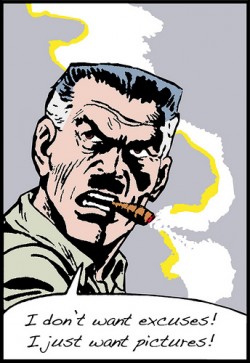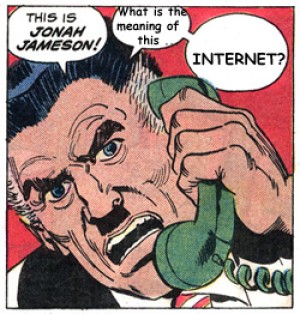PHILLY POST: [It’s] become clear that the newest owners—a group of community-minded Philadelphia millionaires who bought the newspaper group earlier this year–have roughly the same three-step plan for prosperity as their predecessors:
1. Reduce the number of jobs at each paper, and the wages of those left behind.
3. Profit!
The result? We’re watching Philadelphia’s biggest, best, most important news organization slowly melt away. It’s become increasingly clear that few of the journalists who remain believe the top management has a real plan to survive and thrive. So maybe it’s time to try something breathtakingly, radically different. Here’s the proposal:
–Let’s turn the Philadelphia Inquirer into a digital-only publication—except for Sundays. Give them a paywalled website (somewhat like the one already in place at the New York Times and make people pay for a subscription that includes home delivery of the Sunday newspaper.
–Meanwhile, get the Daily News off the web entirely—but continue to print six days a week as the city’s major daily print publication.
Crazy right? This is why it makes sense. MORE
PHAWKER: This makes a lot of sense and at the very least worth a hard look by the ownership. After all, it’s inevitable in some form or another. The current plan, best we can tell, is to wait until the papers sink to the bottom to get in the life rafts. By then it’s too late. The one question is how redundant are print and delivery costs? Do you only save a shit ton of money if both papers go digital-only? Do those print  and delivery cost savings compensate for the loss of daily print ad revenue? Does a mega-Sunday edition — with greatly enhanced content, rising circulation and concurrently rising ad revenue — create a superior cost/benefit ratio than a moribund daily print edition? How could it not? (Don’t answer that.) What is killing The Inquirer faster than the Internet and anemic ad sales and union contracts is how meager and threadbare its actual content has become. How it still tries to be all things to all people, despite dwindling editorial resources, and winds up being nothing to pretty much nobody. Reader loyalty, force of habit and the nobility of windmill-tilting at the mirage of some long-gone golden age of newspapering will only buy them so much time — most of it already spent. Both paper’s have lost nearly 90% of their valuation in the last five years, and continue to hemorrhage money and readers at an alarming rate. In the face of all this, the new ownership seems just as clueless as the last two about what to do about it. Cutting another $28 million in costs and making their products even lamer is hardly a credible response to dwindling readership and the resultant decline in ad revenue. Time to think outside of the honor box.
and delivery cost savings compensate for the loss of daily print ad revenue? Does a mega-Sunday edition — with greatly enhanced content, rising circulation and concurrently rising ad revenue — create a superior cost/benefit ratio than a moribund daily print edition? How could it not? (Don’t answer that.) What is killing The Inquirer faster than the Internet and anemic ad sales and union contracts is how meager and threadbare its actual content has become. How it still tries to be all things to all people, despite dwindling editorial resources, and winds up being nothing to pretty much nobody. Reader loyalty, force of habit and the nobility of windmill-tilting at the mirage of some long-gone golden age of newspapering will only buy them so much time — most of it already spent. Both paper’s have lost nearly 90% of their valuation in the last five years, and continue to hemorrhage money and readers at an alarming rate. In the face of all this, the new ownership seems just as clueless as the last two about what to do about it. Cutting another $28 million in costs and making their products even lamer is hardly a credible response to dwindling readership and the resultant decline in ad revenue. Time to think outside of the honor box.

